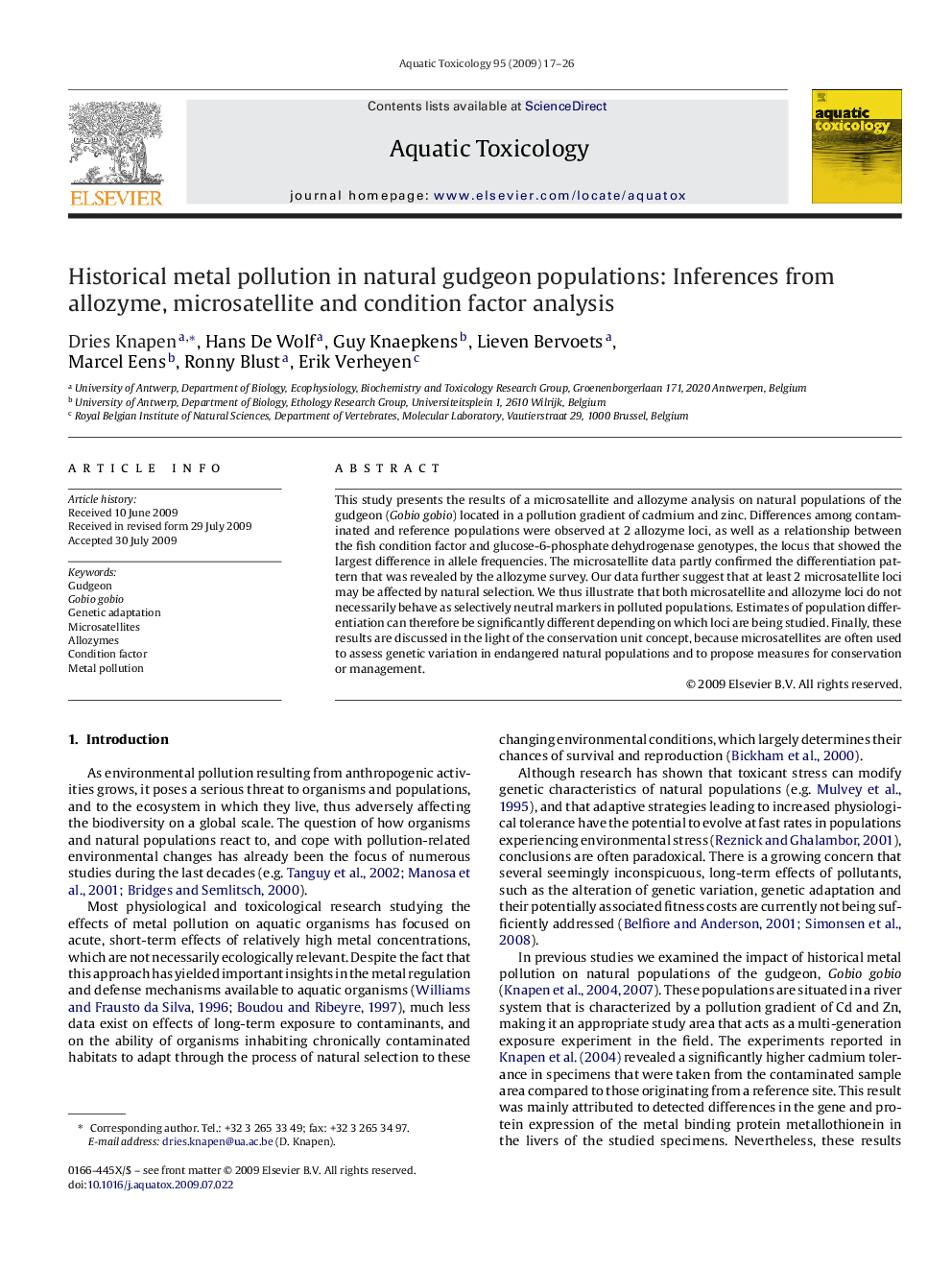| Article ID | Journal | Published Year | Pages | File Type |
|---|---|---|---|---|
| 4530470 | Aquatic Toxicology | 2009 | 10 Pages |
This study presents the results of a microsatellite and allozyme analysis on natural populations of the gudgeon (Gobio gobio) located in a pollution gradient of cadmium and zinc. Differences among contaminated and reference populations were observed at 2 allozyme loci, as well as a relationship between the fish condition factor and glucose-6-phosphate dehydrogenase genotypes, the locus that showed the largest difference in allele frequencies. The microsatellite data partly confirmed the differentiation pattern that was revealed by the allozyme survey. Our data further suggest that at least 2 microsatellite loci may be affected by natural selection. We thus illustrate that both microsatellite and allozyme loci do not necessarily behave as selectively neutral markers in polluted populations. Estimates of population differentiation can therefore be significantly different depending on which loci are being studied. Finally, these results are discussed in the light of the conservation unit concept, because microsatellites are often used to assess genetic variation in endangered natural populations and to propose measures for conservation or management.
